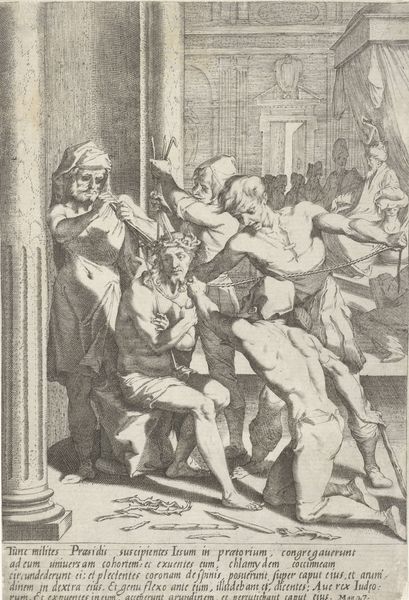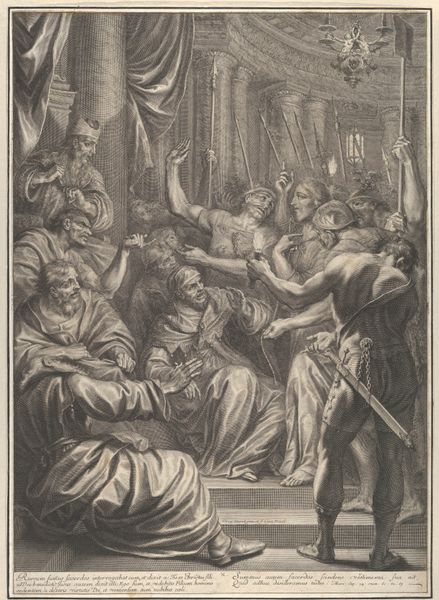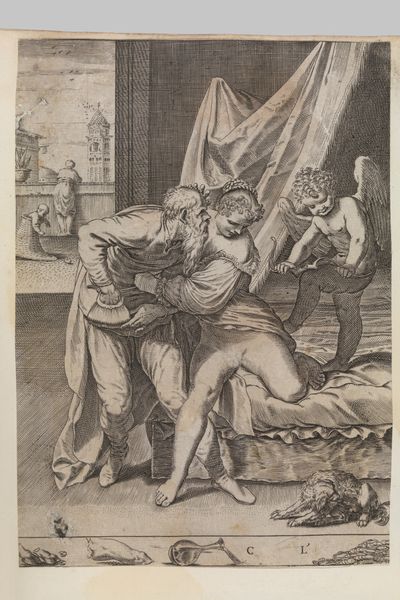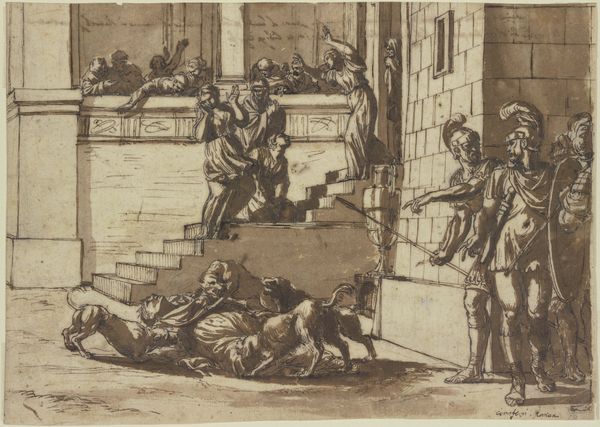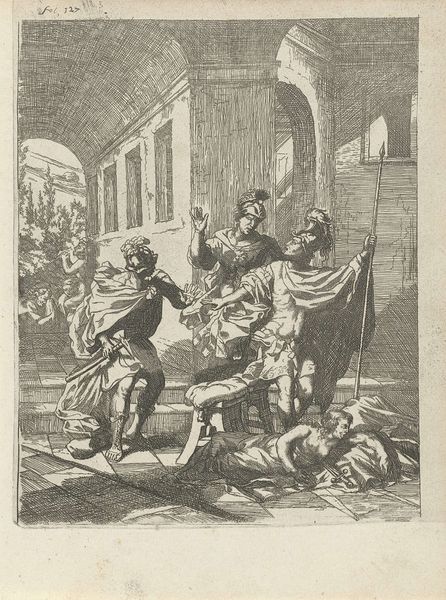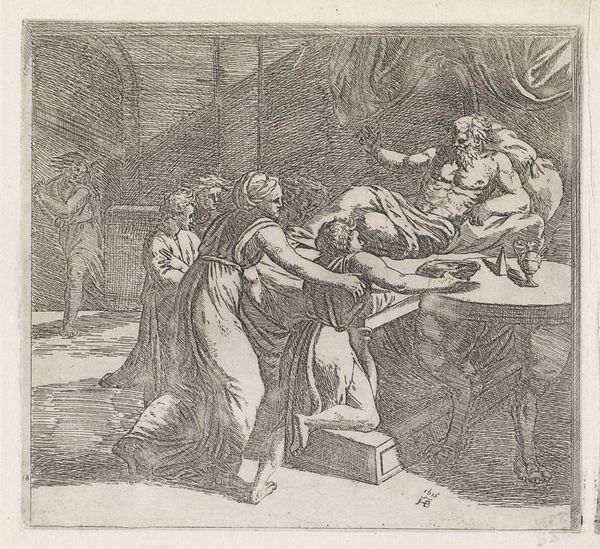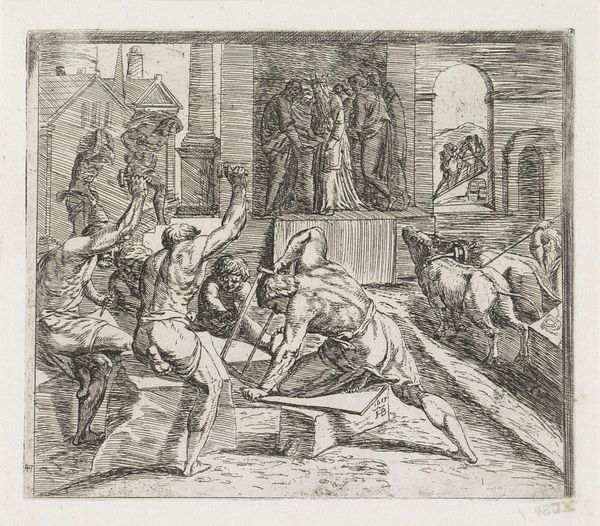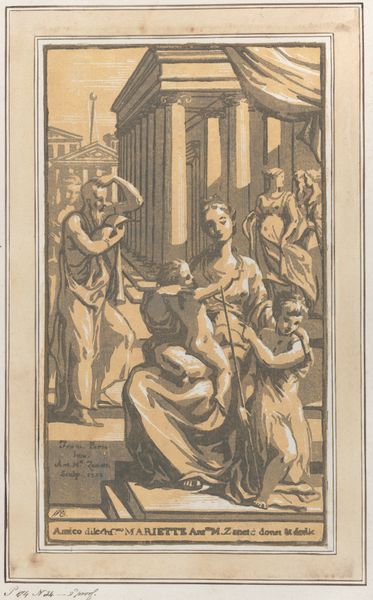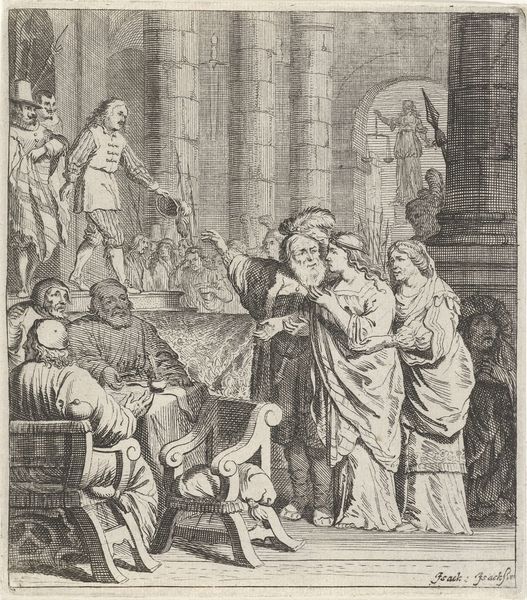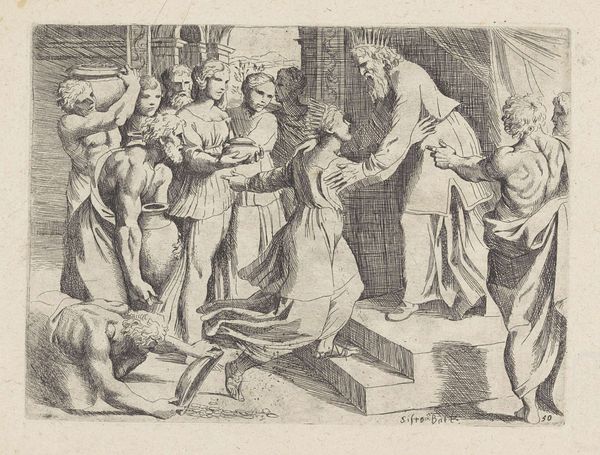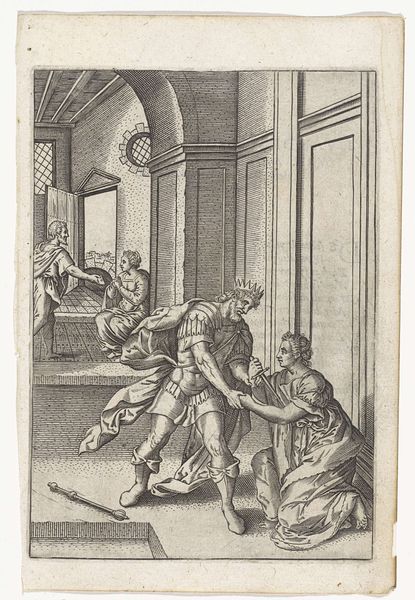
print, etching, engraving
#
baroque
# print
#
etching
#
figuration
#
history-painting
#
engraving
Copyright: National Gallery of Art: CC0 1.0
Editor: So this is Gabriel de Saint-Aubin’s “The Death of Tancred,” from 1760, done with etching and engraving. It’s quite moving—a chaotic scene of mourning depicted with very fine lines. What strikes me is the almost theatrical quality. What do you see in this print? Curator: It’s fascinating how Saint-Aubin captures that moment of profound loss. Beyond the drama, I’m drawn to the symbols. The architectural setting, while classical, feels almost like a stage, as you noted. Look at the circle in the archway – almost like a spotlight. How do you think that formal element, the oculus and classical stagecraft, might be speaking to us? Editor: Maybe it’s elevating the death, putting it on a grand, historical scale? A sense of the eternal or divine looking down? Curator: Exactly! Consider also Tancred's armor cast aside – potent symbols of relinquished earthly power. It reveals vulnerability and hints at a transition, mortality replacing heroic strength. The etching itself, with its intricate web of lines, mirrors the complexity of grief. What feelings arise for you with this representation? Editor: I think that Saint-Aubin used that medium specifically to enhance the emotive qualities of this image, maybe to show the emotional fragility or breaking point that the subjects were undergoing. Curator: The broken body, a symbol of earthly failings. And what do we do with that image today, within the memory of heroic paintings of the past? Does the image offer the audience the means to question what strength and honor truly entail? It's powerful how these visual motifs create a dialogue across centuries. Editor: It is amazing to see how many layers a seemingly straightforward historical scene can contain, isn’t it? Curator: Absolutely. Visual art acts as cultural memory, holding meaning and evoking reflection far beyond its initial creation. The image offers us an understanding of the visual culture of death and its iconography, one that’s been updated throughout generations.
Comments
No comments
Be the first to comment and join the conversation on the ultimate creative platform.

